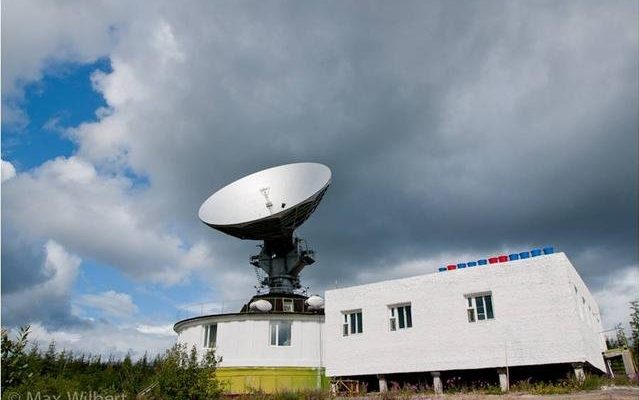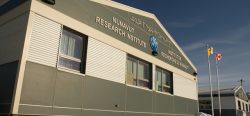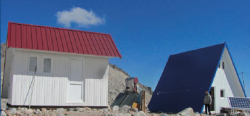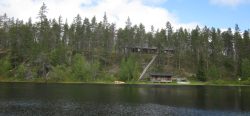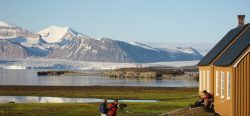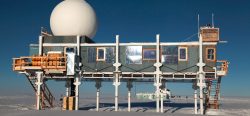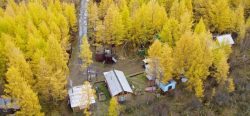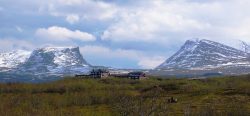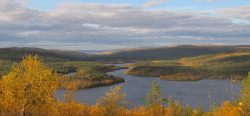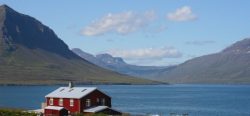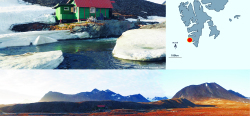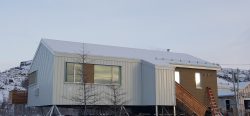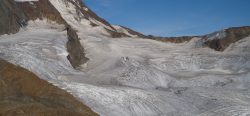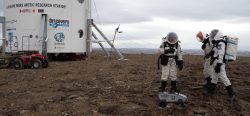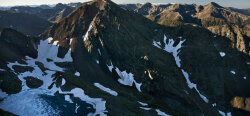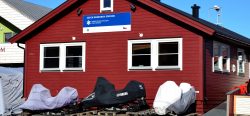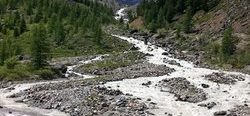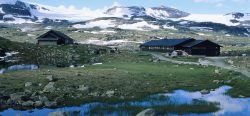Collaborator in the project until spring 2022
NAME AND OWNER
North-East Science Station (NESS) is owned and run by Sergey Zimov and Nikita Zimov.
LOCATION
NESS is situated in the Kolyma River lowland. It is in the foresttundra zone and 5 km from the town of Cherskii. The research station is affiliated with the Pleistocene Park (PLP) located on privately owned land.
BIODIVERSITY AND NATURAL ENVIRONMENT
The station is located in the continuous permafrostPermafrost is frozen ground that remains at or below zero degrees Celsius (32 degrees Fahrenheit) for two or more years. It forms in regions where the mean annual temperature is... More zone with vast territories underlain by yedoma (ice complex). Natural wild life includes bears, moose, and reindeer. In addition, muskoxen, Yakutian horses, and bison occur in the Pleistocene Park.
HISTORY AND FACILITIES
NESS was established in 1980 and has been privately owned since 1990. The total area of facilities under roof is c. 1500 m2, with c. 250-300 m2 laboratory facilities, c. 600 m2 accommodation facilities for station personnel and visitors, c. 150 m2 of conference hall/dining facilities, with the rest being storage and technical facilities. Some facilities allow accommodation and scientific research during winter. Currently, the maximum number of visitors accommodated on the station at any one time is 40-50 people. Visitors are accommodated on the all-inclusive basis. This includes transportation from the airport, accommodation, meals, drinks, and local transportation within reasonable proximity from the station. A variety of shops are available in Cherskii town.
GENERAL RESEARCH AND DATABASES
Research: Climate changeAccording to the United Nations Framework Convention on Climate Change, climate change is change in the climate of the whole Earth or a region of the Earth that is believed... More, permafrostPermafrost is frozen ground that remains at or below zero degrees Celsius (32 degrees Fahrenheit) for two or more years. It forms in regions where the mean annual temperature is... More science, atmospheric composition, biodiversityBiological diversity. The many and varied forms of life on Earth (collectively known as biota). As well as diversity of species (species diversity), there is also diversity within populations of a... More, and hydrologyThe study of water in the environment, particularly its amount, movement and quality. It encompasses water in rivers, lakes, glaciers, soil and underground aquifers. The way in which water (liquid and... More. Data bases: Eddy covariance year round measurements on 3 sites starting 2001. Year round methaneA colourless, odourless gas (chemical formula CH4). Some microbesproduce methane. It can also be found in underground deposits. Methane is the main component of natural gas, which is is an important... More gradient measurements are recorded with a 40 m tall tower in the Pleistocene Park starting in 2007. Research conducted on the station since late 1980th was published in numerous international peer reviewed journals, including Science and Nature.
HUMAN DIMENSION
The town of Cherskii is located 5 km from the station (10 minute drive). The town population is 3000 people, with half of them being Russians, and the rest being Chukchies, Yukagires, and Yakutians. The town is the administrative centre of the district and has a sea port. Some percentage of the population is involved in fishing, hunting, and mammoth tusk collections.
ACCESS
NESS is located 10 minute drive from the Cherskii airport, which is serviced by 2-4 flights a week to the international airport of Yakutsk. The main route for international visitors is Moscow – Yakutsk (6.5 hour flight) with connection flight Yakutsk- Cherskii (4 hour flight).
